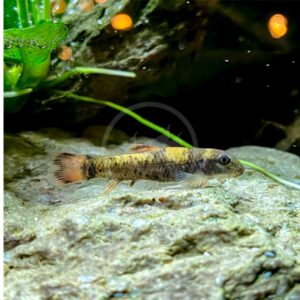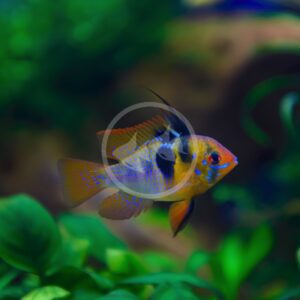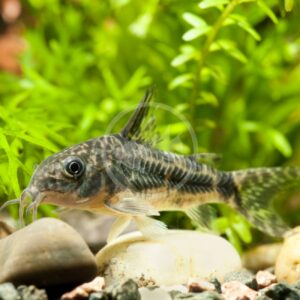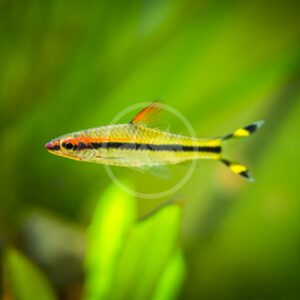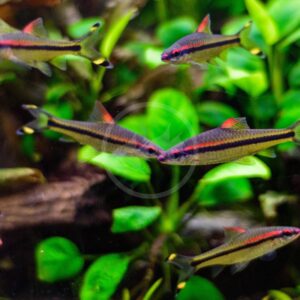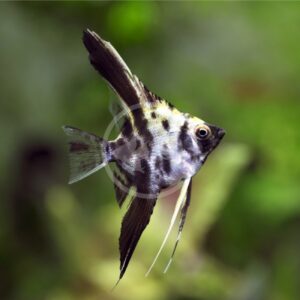*We cannot ship Piranhas to the states of Alabama, Alaska, California, New York, Arizona, Arkansas, Hawaii, Florida, Colorado, Kentucky, Maine, Georgia, Louisiana, Nevada, New Mexico, Mississippi, Utah, Texas, Washington, North and South Carolina, Oklahoma, Ohio (some cities and counties), Virginia, Idaho, Connecticut and Massachusetts.
Care Level: Advanced
Temperament: Aggressive
Live Plant Safe: No
General Description: The Red Belly Piranha, through their depiction in Hollywood films as voracious predators that will strip its prey of flesh in a matter of minutes [a general misconception of the species behavior as a whole], have become one of the most notorious freshwater fishes in the world. Widely found throughout the Amazon Basin, many juvenile Red belly piranha are sourced from aquaculture farming. Adult specimens, and other less common species, are likely collected from the wild. Juvenile Red belly piranha will be void of their red bellies until they mature more. Juveniles at approximately 1″ will be completely silver in color; slightly larger juveniles of several inches will also be silver, with some black spots that disappear with age. Though admired among new and seasoned hobbyists alike, the Red belly piranha should only be considered by the dedicated aquarist that can provide the aquarium space and maintenance routine required by this species (see ‘Care Requirements’ below). Extreme care should be exercised when netting Red belly piranha. Red belly piranha are best kept in groups of 4 or more individuals. An adult Red belly piranha can reach a size of approximately 14″.
Diet Requirements: Red belly piranha are opportunistic carnivores. Juvenile specimens will typically accept various high quality frozen foods, such as bloodworms or brine shrimp. Chopped prawns, silverside fish, earthworms and mussels are also acceptable options. Adult Red belly piranha are more difficult to transition to an artificial diet. Variety is the spice of life in order to maintain color, immune function and longevity of your fish. Note: Live foods, such as feeder guppies, can be utilized sparingly to create interest in prepared foods, but we do not recommend feeding live feeder fish long term for a multitude of reasons. First, feeder fish are not nutritionally dense and therefore, your Red belly piranha will not be very healthy. And second, freshwater feeder fish can introduce disease (Ich) into your aquarium. Feeder ghost shrimp are an alternative to avoid introducing disease. Do not feed your Red belly piranha mammalian or avian meats from the store.
Care Requirements: An established minimum 55 to 75 gallon aquarium is ideal for a small group of juvenile Red belly piranha with the knowledge that as they mature, an aquarium upgrade will be required (e.g., 200 gallons + depending on the number of individuals). Red belly piranha are intolerable of nitrite or ammonia spikes, and should not be introduced into a biologically immature aquarium. Piranha produce a lot of waste and therefore require very large external filtration (e.g., canister filter). Weekly water changes of 30% volume are encouraged to keep water parameters up to standard for piranha (Nitrates < 15 ppm). While injury is rare, take care when performing maintenance on a Red belly piranha aquarium. Lighting and decor are unimportant to Red belly piranha, as healthy individuals have been kept in almost completely bare set-ups. Certain decor may be chewed on or destroyed by Red belly piranha. These fish are best kept as a species only tank and all individuals should be added at once for the best success. Adult individuals form looser hierarchies compared to juveniles. Red belly piranha have been reported to ignore very small fishes (at your own risk) and species such as Exodon paradoxus are a compatible option given their activity level and aggressive temperament. Recommended water conditions, 74-78° F, KH 4-10, pH 5.5-7.5.
Purchase Size: Small: 3/8” to 1/2”, Medium: 1” to 2-1/4”, Large: 3” to 4”, XLarge: 5” to 6”, XXLarge: 7”+
Note: Your item may not look identical to the image provided due to variation within species. Purchase sizes are approximate.



